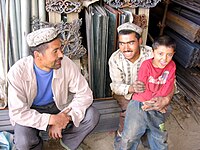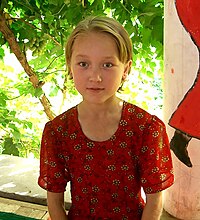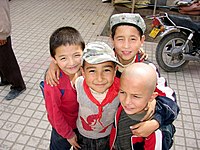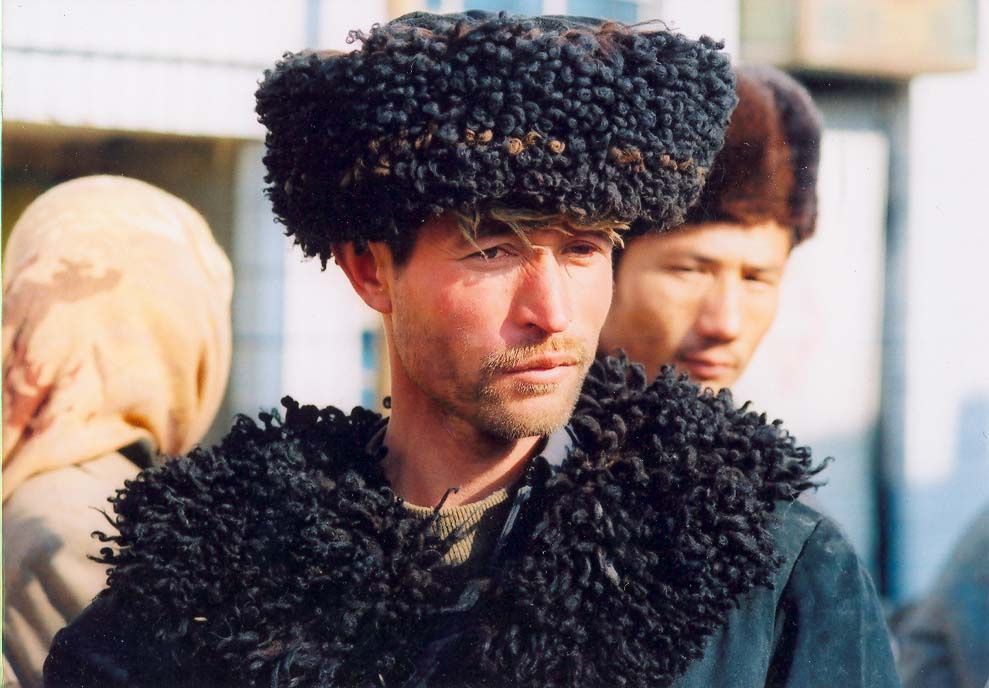@Ant22 , the stories come out every few years about China and the "re-education" camps.
Religious Freedoms are being attacked.
China is EVIL.....boycott Chinese merch...it's made by the unhappy hands of religious prisoners...
This article was on my newsfeed this morning from a Jordan Peterson support group:
Opinion: In Oregon, among Halloween decorations, Julie Keith found a cry for help from a Chinese labour camp. Years later, it's changed how she shops and parents

www.macleans.ca
It's written in a homey, Mom next door, blog kinda way.
A quick sum up:
She
saved thousands of people by turning in the note, met the man who wrote it, and is
advocating not buying cheap stuff from CHINA!!
Quote from the article:
It was a grey Sunday afternoon
in 2011, at my home in Oregon.
So
discounted were these accessories [...]
[...]
on sale at Kmart
the year before, and so they were waiting in storage.
[...] a folded-up piece of paper fell on the floor.
[...] Neat handwriting
in English and
Chinese filled the lined, white note paper;
[...]“…If you occasionally buy this product, please kindly resend this letter to the World Human Right Organization,” it read, detailing
punishments and
abuses of people in a
place called Masanjia. “Thousands people here who are
under the persecution of the Chinese Communist Party Government will thank and remember you forever.”
human rights defenders and
spiritual believers such as
Buddhists and
Christians who
won’t fall in line with the
Chinese Communist Party’s way of thought are sent to these places for
“re-education,” a euphemism for brutal torture, sexual abuse and
brainwashing until they
sign a contract promising they would change their beliefs.
[...]detained for two-and-a-half years for
practicing Falun Gong, a meditation practice outlawed by the Chinese government.
"Today, the thrill I had once gotten from the discounted decorations allowing me to buy more cheap gifts for my daughter couldn’t feel more dissonant—I now know the human cost of that feeling.
So, that is the front, or foundation for all of us to stop
LOOKING at China.
Except... maybe the Genetics of the Uyghurs is IMPORTANT to the Cosmos for something....
Genetics
Variations among Uyghur people

Uyghurs in Khotan, Xinjiang, China

Uyghur girl in
Turpan, Xinjiang, China

Group of Uyghur boys in Hotan, Xinjiang, China
The Uyghurs are a
Eurasian population with Eastern and Western-Eurasian anthropometric and genetic traits. Thus, Uyghurs are one of the many populations of Central Eurasia considered to be genetically related to "
Caucasoid" and "
Mongoloid" populations.
One study by Xu
et al. (2008), using samples from Hetian (
Hotan) only, found Uyghurs have about 60%
European or
South-West Asian ancestry and about 40%
East Asian or
Siberian ancestry.
[175] Further study by the same team showed slightly greater European/West Asian component (52%) in the Uyghur population in southern Xinjiang, but only 47% in the northern Uyghur population.
[176] A different study by Li
et al. (2009) used a larger sample of individuals from a wider area, and found a higher East Asian component with about 70% with much more similarity to "Western East" Eurasians than East Asian populations, while European/West Asian component was about 30%.
[177]
A study (2013) about the
autosomal DNA shows that average Uyghurs are closest to other Turkic people in
Central Asia and
China. The analysis of the diversity of cytochrome B further suggests Uyghurs are closer to
Chinese and Siberian populations than to various "Caucasoid" groups in West Asia or Europe.
[178]
A study on mitochondrial DNA (2013) (therefore the matrilineal genetic contribution) found the frequency of western Eurasian-specific haplogroup in Uyghurs to be 42.6%, and East Asian haplogroup to be 57.4%.[179]
A study on
paternal DNA (2016) shows West Eurasian haplogroups in Uyghurs make up around 65% to 70%, and East Asian haplogroups around 30% to 35%.
[180]
[...]
The study identifies four major ancestral components that may have arisen from two earlier admixed groups: one from the West with European (25–37%) and South Asian ancestries (12–20%); another from the East with Siberian (15–17%) and East Asian ancestries (29–47%). It identifies an ancient wave of settlers that arrived around 3,750 years ago, dating that corresponds with the
Tarim mummies of 4,000–2,000 years ago of a people with European features, and a more recent wave that occurred around 750 years ago. The analysis suggests the Uyghurs are most closely related to Central Asian populations such as the
Hazaras of
Afghanistan and the
Uzbeks, followed by the East Asian and West Eurasian populations. While the Uyghur populations showed significant diversity, the differences between them are smaller than those between Uyghurs and non-Uyghurs.
[181]
The physical features of many Uyghurs, characterized by a mixture of European and East Asian characteristics, are considered "exotic" in China; in
theatre the use of Uighur actors has become common because they can play the roles of foreign characters while at the same time speaking flawless
Mandarin.
[182]

en.wikipedia.org








